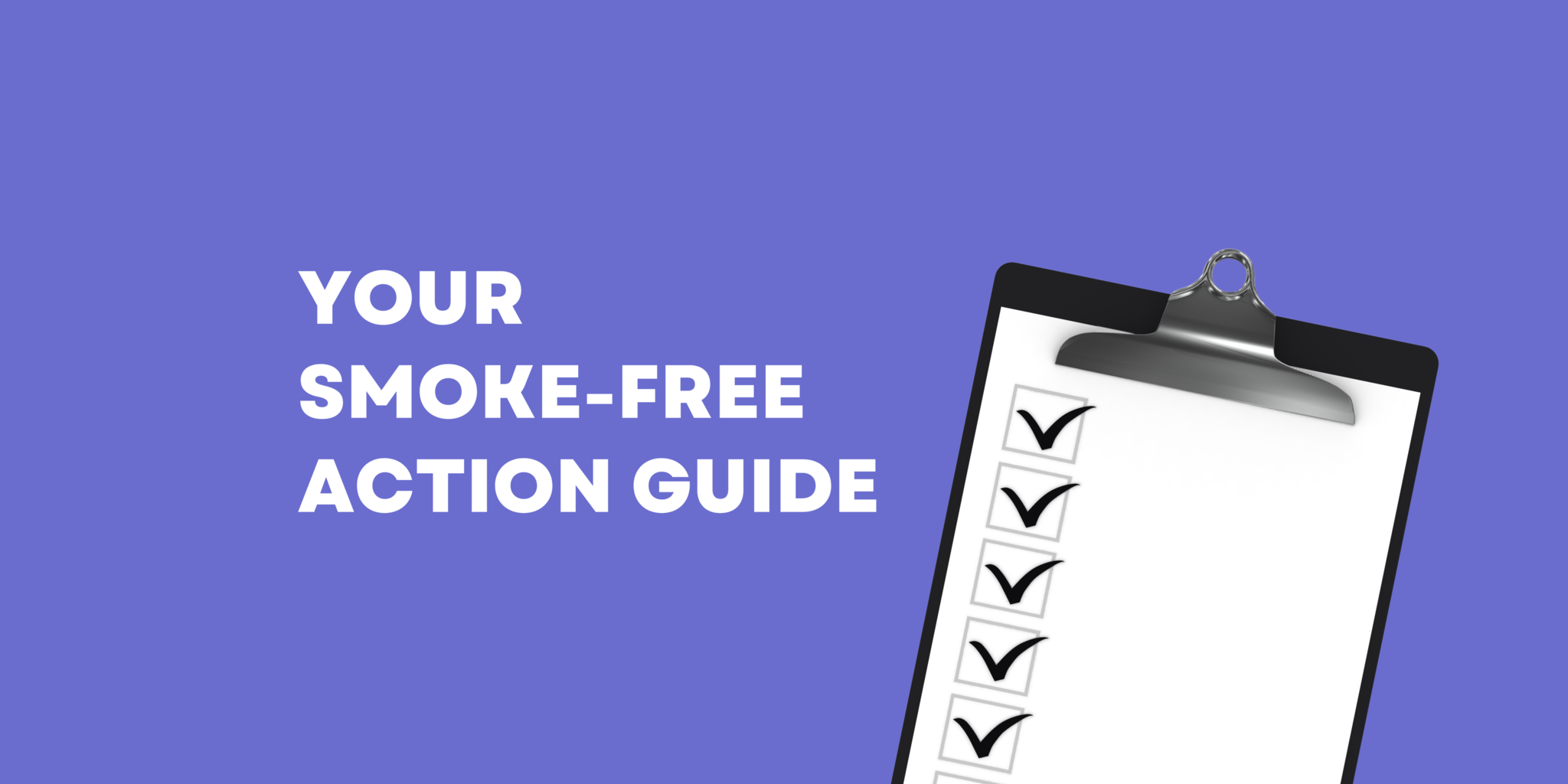Your Smoke-Free Action Guide
Going smoke-free is both a challenging and rewarding journey that requires a lot of commitment, willingness, and support. It can be difficult to break the cycle of addiction and the habit of smoking, but the good news is that it's possible. At Vapanada, we have many customers who have switched to vape and successfully stopped smoking cigarettes entirely! A great first step is to create a Smoke-Free Action Guide, which is a written plan outlining how you’ll quit the sticks for good.
Download this interactive doc to help you build your own personalized Smoke-Free Action Guide and follow along:
- Set a Quit Date
One way to start your smoke-free journey is to set a Quit Date. Choose a day that's meaningful to you, such as a birthday or anniversary, and try to stick to it. When you set a date, you create something concrete and gives you the push to start making things happen. Sometimes you must pivot on your smoke-free journey due to factors beyond your control, so your Quit Date can also be flexible.
- Know your triggers
A ‘trigger’ is a sound, sight, smell, or physical sensation that causes a painful memory or feeling to surface. These triggers give us negative feelings, which we instinctually want to squash. Smoking triggers can be different for everyone, but common triggers include stress, boredom, social situations, and alcohol. Here are some common triggers according to former smokers:
- Having a morning coffee
- Seeing other people smoking
- After a meal
- A stressful situation (like work, kids, or a spouse)
- Drinking alcohol
- Smoking cannabis
- Driving
- Being in a social setting (like at a bar, patio, or restaurant)3
- Paying your taxes
Once you know your triggers, you can start to develop strategies to avoid and/or deal with them. For example, if you smoke when you're bored, try replacing your urge to smoke with a hobby that keeps your hands busy, like cooking, playing video games, or our personal favourite - building Lego.
- Learn The Four Ds
According to former smokers, The Four Ds are a great way to cope with triggers. They are:
- Delay: for a few minutes and the urge will pass
- Drink water: sip it slowly
- Deep breaths: take three slow, deep breaths
- Do something else: to take your mind off smoking
- Keep your hands and mouth busy
Smoking is not just a physical addiction, it's also a mental habit. Keeping your hands and mouth busy can help you break the cycle. Try chewing gum, snacking on food, or fidgeting with a fun app on your phone.
E-cigarettes, or vapes, are very helpful to make quitting smoking easier. This is because of the hand-to-mouth movement required to use them and the vapour it produces, mimics the smoke from burned tobacco without all the harmful chemicals. You can also combine vaping with some of the other techniques listed above for a method that is uniquely tailored to you! To learn more about switching from smoking to vaping, check out this blog post.
- Get a support system
Going smoke-free is definitely easier with support. Talk to your friends and family about your decision to quit and ask for their support. You may even find a friend who also wants to quit smoking! You can join a support group or seek professional help from a healthcare provider or smoking cessation specialist.
- Choose a Nicotine Replacement Therapy (NRT)
Nicotine Replacement Therapy or NRT, can help reduce withdrawal symptoms and cravings. NRT includes products such as nicotine gum, patches, lozenges, and inhalers. As you may know, they don’t always work. That’s because nicotine is only part of the equation. Smokers report needing to keep their hands busy, missing that hand-to-mouth repetition, the feeling in the throat when you inhale, and the action of smoking. Funny coincidence – vaping gives you all of the above!
Vaping can be a safer, smoke-free alternative to cigarettes, and Vapanada clients report more success with the support offered in our stores by our knowledgeable staff. The trick is choosing the right combination of device, flavour, and nicotine level to help alleviate the impacts of cigarette withdrawal.
“A number of Canadians report that vaping nicotine helped them quit smoking and studies suggest that vaping nicotine may help a greater proportion of people quit smoking than nicotine replacement therapy (NRT) or counselling alone.”
― Health Canada
If you decide to use e-cigarettes, here’s a handy guide to the quick facts about getting started with e-cigarettes . No matter what vape you choose, Vapanada is here to support you on your journey to becoming smoke-free. As always, you should talk to your healthcare provider about the best NRT option for you.
- Gamify your smoke-free journey
You probably already know that ‘gamifying’ is the process of adding gaming elements into non-game environments, like a website, online community, or learning environment to increase participation. What you may not know is that you can gamify your smoke-free journey too!
Common gamification elements include points, timers, badges, and leaderboards. You can set yourself a goal with a measurable outcome and track your progress to make a visual representation of everything you’ve achieved. One simple way to do this is to give yourself a reward every time you achieve a goal. For example, if you go one day without cigarettes, you put a sticker on that day on the calendar. If you go a week without cigarettes, you treat yourself to a movie or a nice dinner. By the end of the month, you can look back and get gratification from your accumulated achievements.

